United Nations system universally adopted Sustainable Development Goals (SDGs) in 2015 as beacon for socially, economically and ecologically sustainable development. This Agenda 2030 establishes 17 Goals which are universally applicable for all countries of the world[i]. Within this globally agreed universally applicable SDGs, each country (and many provinces) have developed (or are in the process of developing) specific nationally and locally relevant benchmarks and indicators for achieving these commitments.
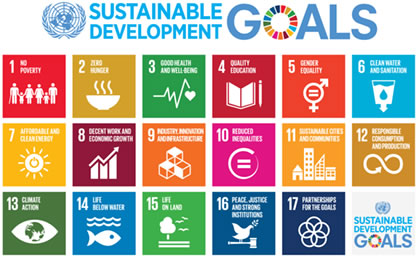
Source: http://www.un.org/sustainabledevelopment/news/communications-material/
While these SDGs are broadly acceptable to all countries and peoples, and have been developed through an extensive consultative process to enable wider ownership, achievement of this ambitious agenda by 2030 faces several capacity deficits. Ensuring sustained political support from leadership of governments at national and sub-national levels is the first capacity deficit. Political leadership in most democratically governed jurisdictions tends to take decisions in generally short-term (3-4 years at most) frame with a view to win next elections. This severely limits continuity of policies and programmes over the SDG time-frame.
Second capacity deficit for achievement of SDGs is investment of adequate resources in each country and region. In contemporary economic environment, it is uncertain if all countries, and global community, would have adequate financing deployed towards all SDGs.
Deficits in institutional and human capacities are also beginning to affect implementation of practical strategies for achievement of SDGs in many countries. Most public institutions are designed to function in silos, pursuing narrow objectives. Mapping of SDGs by NITI Aayog (http://niti.gov.in/content/SDGs.php) reinforces such silos in government ministries and programmes. In contrast, most SDGs can only be achieved through simultaneous actions on several issues. For example, achievement of SDG 5—women….—will not be possible without achievement of SDG 3 & 4---SDG 3 focuses on health, including women’s health while SDG4 focuses on education, especially targeting girls education. Both these goals can only be achieved in many societies when patriarchal attitudes change to prevent violence against girls/women and to enable mobility[ii].
Knowledge deficit is the most critical deficit confronting achievement of SDGs. Existing knowledge system is founded on the principle of instrumental rationality. Modern science practiced over the past 3 centuries is posited on the premise that scientific knowledge can be used to control and mine nature and its huge resources[iii]. Alternative perspectives of knowledge are required to fill this knowledge deficit in ways that learning and collaboration are organically linked to generating locally relevant solutions for SDGs[iv].
Higher education and its myriad institutions can address this knowledge, learning and collaboration deficit in achievement of SDGs. This is the key message that came through the international consultation convened by Association of Commonwealth Universities (ACU) in the 2013-15 period:
“The higher education sector’s efforts to prepare to respond to the Post-2015 agenda require new thinking in terms of scale and modality. As national institutions addressing global challenges, universities need to be able to incorporate diverse demands and diverse stakeholders into their own agendas. Contributors also highlighted the need for change and adaptation within the sector[v]. “
Such a contribution from higher education institutions (HEIs) is possible if higher education is viewed within the larger societal context, and not merely as educating for jobs and livelihoods.
Socially responsible Higher Education
Much recent debates about higher education have focused upon quality, financing and student mobility. Larger question about the social relevance of higher education has only just begun to be raised afresh. Recently published GUNI Report (2017)[vi] has clearly argued:
“Social responsibility emerges as the need to reconsider the social relevance of universities in light of the encounter of the local with the global, regarding priorities, demands, impacts and knowledge needs in the context of globalization. The competitiveness of nations – as the only way to achieve progress – should be balanced with inclusive social development and sustainability of the entire global population.”
This question can only be addressed adequately if it is agreed that the overarching purpose of higher education is shared ‘public good’. HEIs and universities, therefore, are public institutions, contributing to public goods, irrespective of the nature of their financing. Treating higher education as a private good, to be financed by the individual student benefitting from it, as economists have argued, is to severely curtail the real and potential contributions of higher education[vii]. It has to be recognised that purpose of higher education has to be defined in the contemporary societal context differently, independent of the means of resourcing a particular university or HEI.
In many societies, regions and communities, HEIs are some of the most resourced institutions. They have enormous physical infrastructure (classrooms, labs, residences, office space, recreational facilities, etc.) which are far superior to anything available to local communities, or even local government agencies. And much of this infrastructure is under-utilised, when viewed in 24X7=365 days lens. HEIs also have enormous digital capacity in hardware, software and human-ware. It has financial resources, endowments and revenue streams. Intellectual resources and capacities of HEIs are unparalleled in such locations and places. Most importantly, HEIs have youthful energy, commitment and hope, as reflected in its students.
How can they be deployed for public good?
In general discourse on social responsibility, much of the focus historically has been on the service mission of HEIs. It has been argued that universities contribute to social responsibility through activities undertaken as service. Service is generally defined through such activities where students outreach to weaker and poorer sections of society and undertake some helpful services. Most popular service activities by students have been around sanitation, hygiene, literacy, etc.[viii]. Many national higher education systems have policies and programmes that promote such service activities. National Service Scheme (NSS) in India is a long-standing such programme that all undergraduate students have to participate in Indonesia, Argentina and Malaysia have some similar national policies[ix]. In North America, service-learning has been promoted to advance student learning through service to society.
However, such an approach tends to ‘ghettoise’ social responsibility of universities into departments and units responsible for facilitating service by students. Rest of the system of higher education continues as before. A recent variation of this approach is ‘adopting the poor’ model. Slums and hamlets in villages are ‘adopted’ by colleges and universities with a view to ‘help them develop’[x].
This is charity approach towards the poor and the excluded; it assumes that students and faculty know all, and ignorant poor people have to be told what is good for them[xi].
Social responsibility in higher education can serve the public good when this perspective is integrated in all the three core missions of a university—teaching, research & service. In this approach, there is a need to shift the emphasis for each of the three core missions:
- Learning, not teaching
- Knowledge generation & mobilisation, not research
- Service as mutual empowerment, not charity
In such a reformulation of core missions, HEIs can become socially relevant by performing these functions effectively. Viewed in this sense, universities do not need to do anything different, or additional, to be socially responsible. They should do their core work differently. Learning emphasis in teaching function would require reviewing curriculum and pedagogy to become socially relevant. An engaged, outward, trans-disciplinary stance will enable enriching the curriculum and promoting learning in multi-modal pedagogies (in addition to the classroom & lab).[xii]
Socially relevant knowledge generation and mobilisation will require valuing diversity of forms, systems and modes of knowledge and knowledge production. It will require valuing indigenous, practical, experiential knowledge, in addition to theoretical and experimental. It will entail respecting epistemic diversity and community-university research partnerships. New competencies in community-based participatory research will need to be learnt to practice such an engaged stance in research[xiii].
Likewise, service would need to be viewed as empowering the so-called ‘beneficiaries’, as well as students and faculty. Mutual respect and benefit will become foundational to such service.
Therefore, socially relevant higher education is applicable to everything that a university does---teaching, research, service.
It is applicable to all disciplines and faculties, not just in extra-mural or extension departments.
And it positions a HEI as a public institution located in public sphere, contributing to public purposes[xiv]. In this respect, and among many others, “the specific responsibilities of HEIs would be[xv]:
- Adopting the mantle of the civic university – pursuing the ‘public good’ by aligning its interests with those of society, and working collaboratively with other HEIs to maximize their collective impact;
- Playing a proactive role in ensuring that the SDGs are included in local agendas, proposing changes to education, conducting research and engaging with local and global communities on sustainable development;
- Educating the SDG Generation needed to make the SDGs a reality, with the necessary knowledge, skills, competencies and partnerships, thereby helping to produce new SDG leaders;
- Building capacities for SDG policies, planning and management;
- Conducting transversal reviews and refinements of curricula to ensure the mainstreaming of SDG issues across curricula, and including new values and practices for economic development that enhance social equity while reducing environmental risk”
Teaching & Learning
Several practical steps can be taken to align learning by and teaching of students to the various SDGs. Different faculties, disciplines and professional courses can enhance learning of students about SDGs while pursuing their regular education. Three such practical ways are mentioned below:
- Revise Curriculum
Existing syllabus and curriculum can be revised and updated to bring in aspects of SDGs which have not been considered so far.
Take for example SDG5 which focuses on ‘achieving gender equality and empowerment of girls and women’. A syllabus on undergraduate economics course can include topics like: How do constraints faced by women affect labour force participation? How does it impact on GDP and other dimensions of economic development? In what way restrictions on mobility of girls affect their education at secondary and post-secondary levels? Likewise, syllabus of medicine may include certain topics related to SDG5 (and not just SDG4 which focuses on ‘health for all’). How does sexual harassment of women at workplace affect their health? What psycho-somatic health affects result from gender discrimination at home in early childhood?
- Introduce New Courses
HEIs can design and introduce new courses at undergraduate and graduate levels in response to various SDGs.
For example, very few courses currently exist on subjects of water and sanitation as related to SDG6 ---‘ensure access to water & sanitation’. New courses for engineering students may be designed focused exclusively on water harvesting, storage, security and distribution. Management programmes may design a new course on logistic & business planning for sustainable 24x7 water supply for urban and rural habitations. New courses for students of civil engineering and architecture may focus on individual and collective sanitation systems in an affordable manner.
- Engaged pedagogy
Teaching of all subjects may become more engaged with real world, society-at-large, and not merely in classroom. Innovative pedagogical tools can be adapted so that students learn about locally distinctive aspects of their discipline, whatever it be.
SDG2 is critical for survival and well-being of many societies today---‘End hunger, achieve food security, improve nutrition’. Faculty of agriculture may include certain topics to be taught in the communities, like traditional food habits and organic agriculture. Faculty of business may require field projects by students on food storage and supply chains. Faculty of medicine may design community level internships to learn about factors affecting hygiene and malnutrition.
Food, nutrition and hunger may be learnt through engaged pedagogy by a wide range of disciplines---sociology, anthropology, economic, politics. This will prepare students to understand the concrete meanings and manifestations of SDG2.
Faculty and teachers can find many different practical ways to think about including topics related to various SDGs in their courses, even if disciplinary boundaries have historically excluded those topics. Likewise, contextually relevant learning of the contents of various SDGs can be designed through methods of engaged pedagogy in all fields of study[xvi].
Research & Knowledge
HEIs can contribute to developing new knowledge and insights about the contents and strategies for achieving various SDGs through generation of new knowledge and systematic research. All disciplines of study and all faculties have important contributions to make towards understanding and implementation of SDGs in different socio-ecological contexts and politico-economic systems.
Three practical ways can be readily utilised by HEIs in making research contribute to informed understanding of SDGs:
- Frame locally usable research
Students and faculty at HEIs may frame their research questions which may produce locally useful and actionable knowledge. Structured and regular interactions with local actors---district administration, local government, civil society, local business---may generate research questions that have relevance for achievement of SDGs locally.
SDG9 is targeting resilient infrastructure and sustainable industrialisation. Engineering faculty and students at HEI may study specific infrastructure gaps from a resilience lens in a city or district. Departments of energy, minerals and mining may find interesting research topics on green technologies for local industry. Students and faculty of economics and business may define their research to support small/medium businesses in that location to become resilient. Monitoring air quality and water treatment systems could be a very actionable research for teams of students and faculty.
Topics and questions for research abound; the key to effective local framing is ‘stepping outside the boundary’ of HEIs to interact with local actors so that they become stake-holders in such research.
- Build Knowledge in partnership
If a mutually beneficial partnership with local communities and institutions—business, government, civil society--- is built, research partnership may become supportive of new knowledge and its use. HEIs may need to create boundary-spanning structures for realising such partnerships[xvii].
SDG11 focuses on improving the quality of urban life. HEIs can partner with municipalities to contribute new knowledge for improved urbanisation and governance of urban services. Most cities lack capacity to generate and maintain habitation level data, especially where rapid migration is occurring. Several faculties---statistics, urban studies, planning, economics---can support such research. Studies of land use in urban areas and in-situ improvements in housing infrastructure may be carried out by faculty of architecture, geography, and engineering. Operations research faculty and students may undertake mobility analysis to provide insights into transportation design in cities.
Once such partnerships are built, ongoing nurturance of relationships by HEIs may enable a wide variety of research opportunities for students and faculty in support of SDGs.
- Learn new competencies
In order to be able to undertake such partnerships and locally relevant research, students and researchers at HEIs need to develop certain additional competencies. Current training in research methodology in most universities does not prepare students to build partnerships. Training in research methodology does not teach how to integrate disciplinary interests with local research priorities. Students and their teachers do not know how to share their research findings with local stake-holders, other than in the form of a research paper written for a journal and/or a research conference[xviii].
It is possible to learn these competencies. Several innovative efforts have been going on in training of next generation of researchers in ‘community-based participatory research methodologies’[xix]. Additionally, research training can include understanding of multiple forms and sources of knowledge in society, and skills required to learn from them. Competencies in knowledge mobilisation can also be learnt, as several HEI systems have begun to emphasise[xx].
Therefore, HEIs interested in contributing to achievement of SDGs through their research expertise may need to invest in learning of new research competencies for students and faculty.
Engaged Service
New approaches to service function of HEIs can be developed to contribute to several SDGs. Service is generally viewed as charity for the poor, by ‘expert’ students and faculty. In order to demonstrate models, innovations and pilots, service function may be designed to be carried out in an engaged stance.
Internships, field placements, co-operative education, service-learning are some of the presently used forms of engaged service. Specific SDG focus could be provided for different teams of students and faculty. Short-term projects by administrative staff in support of such field projects may also be envisioned.
For such practices to be realised, HEIs need to create enabling mechanisms such structures act as intermediary between HEIs and external stake-holders. Several HEIs have created positions of Pro-Vice Chancellors for Engagement to achieve such outcomes. However, in practice, mush greater attention of such mechanisms has focused on building partnerships with industry; local government agencies and community institutions have not received much attention.
Realisation of SDGs would require engaged service towards all societal actors, since no single stake-holder alone can bring about the desired outcomes in any society, as SDG17 has argued.
Making it Work
What will it take for HEIs to do what has been argued above? What kinds of actions may be required for a supportive eco-system to emerge that spurs HEIs to make their contributions towards realisation of SDGs?
- First and foremost, leadership of HEIs and universities must encourage institution-wide appreciation of and learning about SDGs. Platforms of Vice-Chancellors and university presidents must put this urgently on their agenda.
- National and provincial ministries responsible for higher education policy and Higher Education Councils in all countries must encourage, mandate and resource such shifts towards linking the core functions of HEIs and universities to SDGs.
- Associations of teachers, researchers and universities can play a mobilising role to generate demand for such an engagement with SDGs. Such networks and associations can place SDG on the agenda of their forthcoming meetings.
- Students can become key champions of higher education engagement with SDGs. Local, national and international student associations can focus on SDGs in their forthcoming meetings, thereby generating demand for university authorities to act.
- International networks and associations of universities and their leaders can do likewise to promote engagement with SDGs. International Association of Universities (IAU) is one such example. Association of Commonwealth Universities (ACU) had taken a lead in the run-up to SDGs and made great contributions. Other regional and sectoral associations can also be so mobilised.
- UNESCO has a special role to play in this regard. It is holding a special meeting of UNESCO Chairs this month in this regard. Its regional and national associations and offices should be proactively convening dialogues with universities to promote such engagement with SDGs.
- Global University Network for Innovations (GUNI) is already playing such a role in partnership with UNU. It has convened a special conference in this regard in September 2017.
- Finally, civil society needs to focus its attention on higher education and its institutions. There has been somewhat puzzling apathy amongst civil society leaders, activists, networks and platforms to engage with HEIs—universities, colleges, technical institutes, etc.--- in order to make them accountable to their own missions.
Much can be done, and much more needs to be done, in making higher education contribute to realisation of SDGs over the next 15 years.
HEIs, universities, colleges and related stake-holders must ‘make the commitment’ now towards SDGs.
May 2017
[i] United Nations (2017): Sustainable Development Knowledge Platform. Retrieved on May 5, 2017 from: https://sustainabledevelopment.un.org/content/documents/11803Official-List-of-Proposed-SDG-Indicators.pdf
[ii] UNESCO (2015). Education 2030 (Incheon Declaration and Framework for Action: Towards Inclusive and Equitable Quality Education and Life Long Learning for All). Paris: UNESCO
[iii] Tandon, R. (2002). Science, Rationality and Environmental Ethics. Retrieved on May 5, 2017 from: http://192.9.200.201/cgi-bin/library?a=q&r=1&hs=1&e=q-000-00---0rajesht1--00-0-0--0prompt-10---4----ddc--0-1l--1-en-50---20-about-instrumental--00031-001-1-0utfZz-8-00&h=ddc&t=1&q=rationality
[iv] Tandon, R., Singh, W., Clover, D., & Hall, B. (2016). Knowledge Democracy and Excellence in Engagement. IDS Bulletin: Engaged Excellence, 47 (6), 19-35 [Also available online at: https://opendocs.ids.ac.uk/opendocs/bitstream/ handle/123456789/12748/IDSB47.6_10.190881968-2016.197.pdf?sequence=1&isAllowed=y ]
[v] The Association of Commonwealth Universities (ACU) (2015). Progress and Potential: Higher education playing its part in the Sustainable Development Goals. Retrieved on May 5, 2017 from: https://www.google.co.in/url?sa=t&rct=j&q=&esrc=s&source=web&cd=2&ved=0ahUKEwjxgfO0otjTAhXLs48KHRgJDQQQFggrMAE&url=https%3A%2F%2Fwww.acu.ac.uk%2Fpublication%2Fdownload%3Fid%3D540&usg=AFQjCNFzNa8191DGM5HwMi6SDec26Uc8DQ
[vi] GUNi (Ed.). (2017) Towards a Socially Responsible University: Balancing the Global with the Local (Higher Education World Report 6). Retrieved on May 5, 2017 from: http://www.guninetwork.org/files/download_full_report.pdf
[vii] Tandon, R. (2014). Global challenges. In GUNi’s, Knowledge, Engagement and Higher Education: Contributing to Social Change (Higher Education in the World 5). Hampshire/New York: Palgrave Macmillan
[viii] Tapia, M. N. (2014). Knowledge, Engagement and Higher Education in Latin America and the Caribbean. In GUNi (Eds.) Knowledge, Engagement and Higher Education: Contributing to Social Change (Higher Education in the World 5). Hampshire/New York: Palgrave Macmillan
[ix] UNDP (2014). Strengthening Nehru Yuva Kendra Sangathan (NYKS) and National Service Scheme (NSS). Retrieved on May 5, 2017 from: http://www.in.undp.org/content/india/en/home/operations/projects/ poverty reduction/strengthening-nyks-and-nss/
[x] Bhagwat, N. & Abhyankar, P. (2016) Sustainable Development & Indian Higher Education: A constructive alliance. Retrieved on May 5, 2017 from: http://www.srjis.com/pages/pdfFiles/146726553217.%20NIKHILA%20BHAGVAT.pdf
[xi] Hok Ka Ma, C. & Tandon, R. (2014) Knowledge, Engagement and Higher Education in Asia and the Pacific. In GUNi (Eds.) Knowledge, Engagement and Higher Education: Contributing to Social Change (Higher Education in the World 5). Hampshire/New York: Palgrave Macmillan
[xii] GUNi (Ed). (2012). Higher Education’s Commitment to Sustainability: from Understanding to Action (Higher Education in the World 4). Hampshire/New York: Palgrave Macmillan
[xiii] Hall, B. et al. (2011) Towards a knowledge democracy movement: contemporary trends in community university research partnerships, Special Issue of Rizoma Freireano on Global Developments in Community University Research Partnerships, vol 9.
[xiv] Tandon, R. (2011). Fostering Social Responsibility in Higher Education in India (paper prepared for Planning Commission). Retrieved on May 5, 2017 from: http://unescochair-cbrsr.org/unesco/pdf/Fostering_Social_ Responsibility.pdf
[xv] Grau, F. X., Goddard, J., Hall, B., Hazelkorn, E., & Tandon, R. (2017). Recommendations for academia, academic leaders and higher education and research policymakers. In GUNi (Eds.). Towards a Socially Responsible University: Balancing the Global with the Local. Retrieved on May 5, 2017 from: http://www.guninetwork.org/files/download_full_report.pdf
[xvi] Harkavy,I., Hartley, M., Hodges, R. A., & Weeks, J. (2017). Recognizing Excellence in Engaged Teaching and Scholarship: the University of Pennsylvania’s Experience. In GUNi (Eds.). Towards a Socially Responsible University: Balancing the Global with the Local. Retrieved on May 5, 2017 from: http://www.guninetwork.org/files/download_full_report.pdf
[xvii] Hall, B., Tandon, R., & Tremblay, C. (Eds.) (2015). Strengthening Community University Research Partnerships: Global Perspectives. Victoria/New Delhi: UVic/PRIA
[xviii] Tandon, R., Hall, B., Lepore, W. & Singh, W. (Eds.) (2016). Knowledge and Engagement: Building Capacities for the Next Generation of Community Based Researchers. Victoria/New Delhi: UVic/PRIA
[xix] ibid
[xx] Munck, R., McIlrath, L., Hall, B., & Tandon, R. (Eds.) (2014). Higher Education and Community Based Research. New York (USA): Palgrave Macmillan
latest jordan Sneakers | Sneakers- Log in to post comments




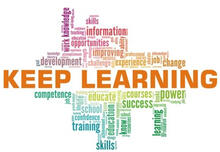

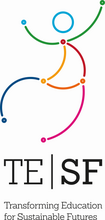

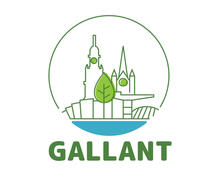
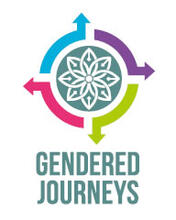
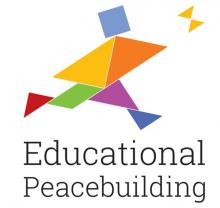
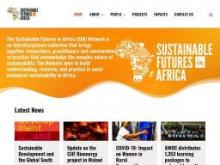

Latest Comments